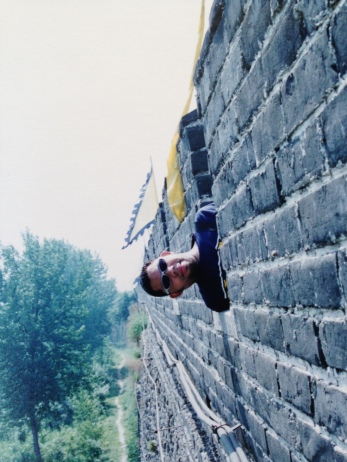After Thousand of Years, #China Changing Mind on #Testing ? #edreform

I leave for China tomorrow. I will be accompanying the Teachers of the Year from several states as an NEA Foundation Global Fellow. We will visit schools in the Middle Kingdom over the next eight days.
This will be my third trip to China. My first trip was a six month stay in 1996. I studied Chinese high school students’ achievement motivation as a NIH Fogarty Fellow at the Institute of Psychology in the Chinese Academy of Sciences (A few photos from my summer in China included in this post). My second trip to was in 2004. My visit to Beijing was part of a 16-country Around-the-World trip where we circumnavigated the globe via air during a four week period. Next time you see me in person, ask me to tell you the backstory about the trip.

Julian Vasquez Heilig at Great Wall of China (Shanhaiguan) in 1996
I am looking forward to the 2014 trip. It is an interesting time to visit China. The country is potentially in the midst of an apparent sea change on high-stakes testing. Chinese society has been driven by testing for thousands of years, dating back to ancient times when civil servants were selected based solely on the imperial/civil service examination. While this old exam system was terminated in 1906, the high-stakes testing culture persists and it continues to play a critical role in selecting talents in contemporary Chinese society. The public school environment in China is testing-oriented largely because the sole mechanism of college access for the vast majority of high school students is the national higher education entrance examination. The testing culture cascades down from the higher education entrance examination through all levels of the educational system. As college admission rates determine secondary schools’ evaluation and enrollment, high school teachers often test students via test preparation classes. Since students that gain access to key high schools are more likely to enroll in selective universities, middle school students work hard to score at the top of their class in order to enroll in better high schools. Likewise, elementary school children are tested to determine which middle schools they will attend. Thus, extensive and systematic testing characterizes Chinese students’ entire educational experience.
To sum up, high-stakes test scores are not only the metrics determining students’ advancement from better elementary schools to key secondary schools to selective colleges, but are also determining a schools’ reputations. Thus, it comes as no surprise that teachers are forced to inundate students with testing. One common critique of the excessive focus on testing is that Chinese college students are said to have spectacular test scores but “low ability” (Zhao, 2010).
China’s recent education reform seeks to take the country in a new direction. Central to these reforms is a de-After Thousand of Years, #China Changing Mind on #Testing ? #edreform | Cloaking Inequity:
